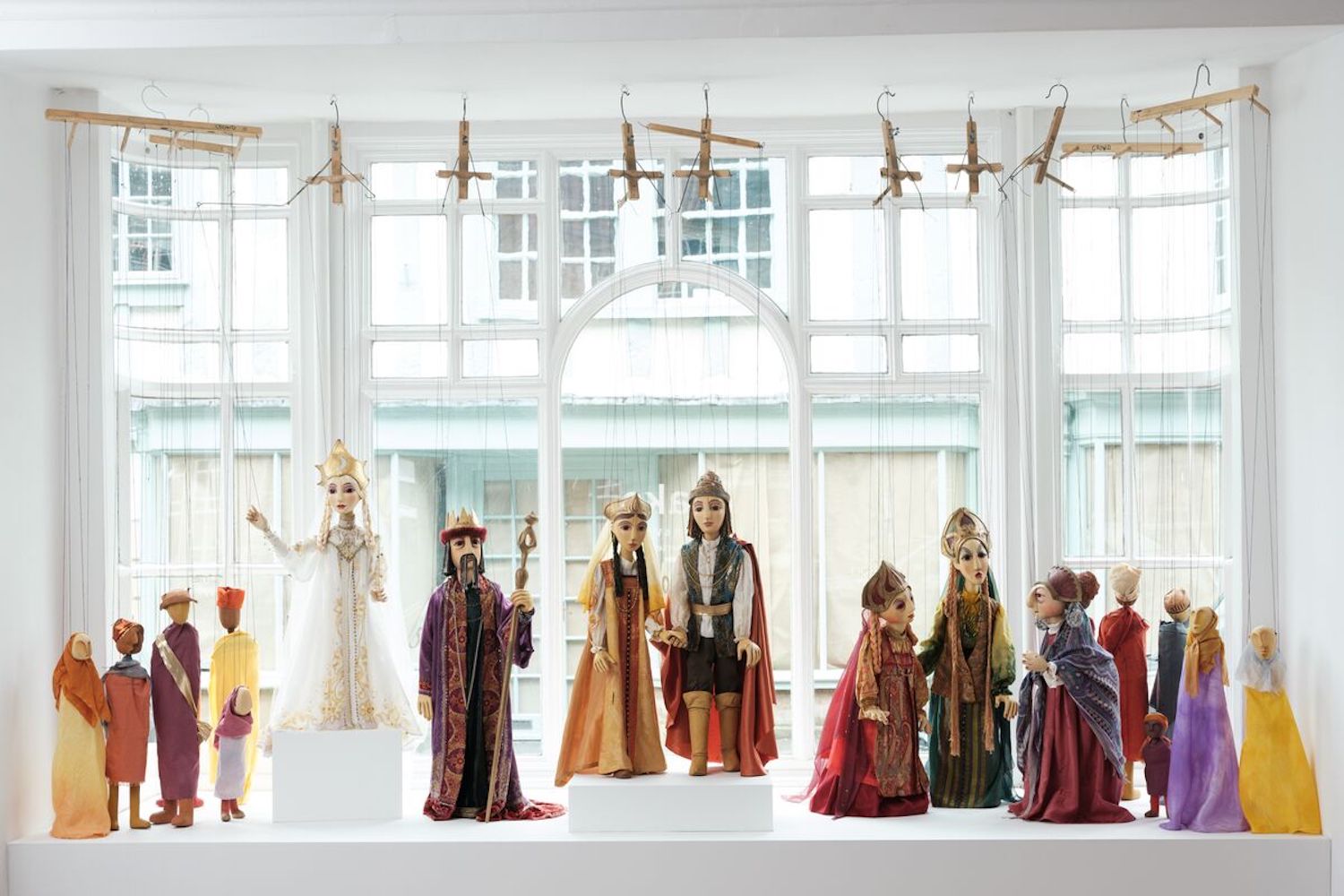BRUTON, UK — In the world of theater, there is something irresistible about going behind the scenes. We all crave a glimpse of the magician’s hidden hand, the wig sitting ready on a stand, or the costumed performer smoking by the stage door. The puppet-maker’s workshop is perhaps the most compelling of all — a place of fairytales and craftsmanship where carved wood, scraps of fabric, and cotton strings become characters that come alive through the puppeteer’s expert touch. What’s wonderful about puppets is that knowing how they are made and operated only makes them more magical.
This magic is evident in The Curious Art of Puppetry, a charming exhibition of Lyndie Wright’s puppets at Make Hauser & Wirth, the gallery giant’s location dedicated to crafted objects. The show features a cast of human, animal, and fantastical characters spanning 65 years of her work, a career that has shaped British puppetry over the past several decades. Wright produced some of the puppets on view for theatrical productions by the Royal Shakespeare Company, National Theatre, and the Little Angel Theatre. The artist founded the latter with her husband in 1961 on a London site that incorporated a children’s theater, puppetry workshop, and the small cottage in which the couple lived.

Wright’s puppets are strikingly varied. A brood of near-human-height monsters from Igor Stravinsky’s The Soldier’s Tale (1968) huddles in one corner, as though awaiting activation from a troupe of actors; they are comical, sinister, and emotive in equal measure. Across the room, a troupe of tumblers cavort, suitably floppy-jointed and instantly recognizable to lovers of illustrator Quentin Blake’s 1970 children’s book Angelo. Elsewhere are the pair of puppets “Venus and Adonis” (2004), one exquisitely carved from wood, the other sewn from suggestively soft leather. In each case, the materials capture an element of the character’s story and personality.
Also in the exhibition is a recreation of a corner of Wright’s studio, with a pinboard of reference images, carving tools, and a half-finished wooden hand held in a clamp. It offers fascinating insight into how Wright imbues her materials with a “spirit,” as her daughter Sarah Wright puts it. A successful puppeteer herself, Sarah says in the exhibition text, “The puppets have a life of their own,” adding, “The challenge of the puppeteer … is to find out how to bring that life to the forefront to tell the right story.” This exhibition tells a story of its own — replete with the wondrous possibility that the puppets might spring into life at any moment.







Lyndie Wright: The Curious Art of Puppetry continues at Make Hauser & Wirth (13 High Street, Bruton, Somerset, England) through October 13. The exhibition was organized by the gallery.

